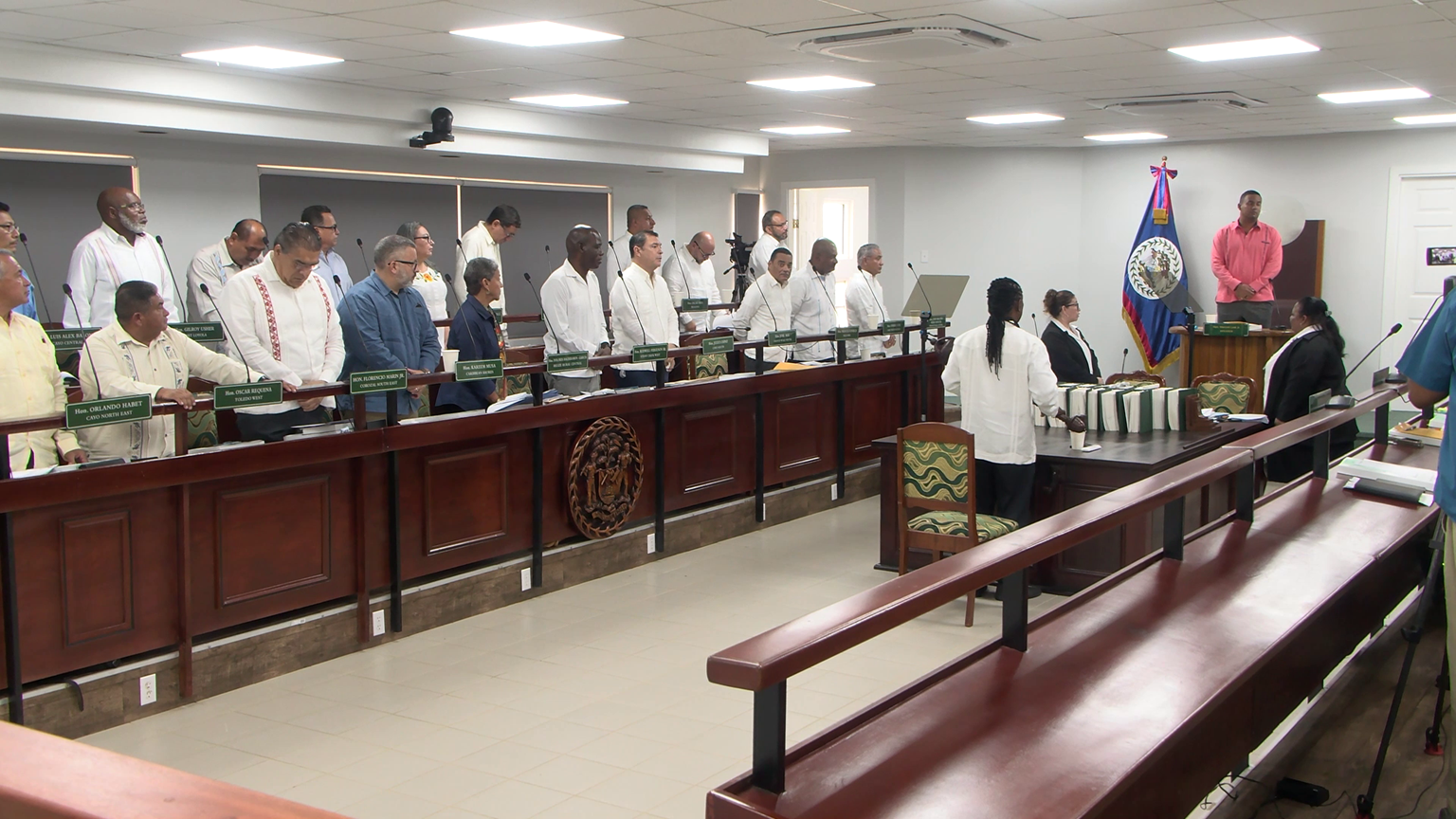All eyes were on the House of Representatives today as Prime Minister John Briceño rolled out the proposed 2025 National Budget—totaling a hefty $1.78 billion in spending, with projected revenues and grants coming in at $1.74 billion. The PM explained the delay in presenting the budget, which usually happens in March before the new financial year begins on April first. This year, however, the March twelfth General Elections pushed everything back. He pointed out that this isn’t the first time an election year has caused a delay, citing a similar situation in 2012 under the previous U.D.P. administration. Briceño also highlighted what he called a strong economic performance, boasting an eight-point-two percent GDP growth in 2024. But not everyone was impressed. Leader of the Opposition Tracy Taegar-Panton questioned the government’s priorities, expressing concern over how much of the budget is being funneled into infrastructure rather than areas she believes need more urgent attention. News Five’s Marion Ali has more on the presentation and what this budget could mean for Belizeans.
The numbers are in—Prime Minister John Briceño has officially unveiled a $1.78 billion spending plan for the 2025–2026 fiscal year. The budget, presented today in the National Assembly, outlines the government’s financial roadmap for the year ahead, covering everything from infrastructure and education to healthcare and social programs. With big investments on the table, all eyes will be on how the government plans to balance spending with revenue—and what this means for everyday Belizeans.
Prime Minister John Briceño
“We propose one point seven, two billion in total spending, of which one point two, five billion are recurrent in nature and five hundred and twenty-eight million dollars represent capital investments. In this budget cycle, eighty million previously classified as subsidies and transfers is being reclassified as what they truly are, which is personal emoluments. This is an important adjustment since this subsidies and transfers category imply an annual adjustable outlay, as opposed to personal emoluments that carry different obligations. Therefore, for this fiscal year, six hundred and ninety-eight million, let me repeat – for this fiscal year, six hundred and ninety-eight million is therefore allotted to salaries and pensions, representing fifty-six percent of total recurrent spending.”
While the government has laid out a bold budget for the upcoming financial year, it’s banking on $1.74 billion in revenue to fund it. That leaves a gap that will need to be filled—raising questions about how the shortfall will be managed. As the budget debate unfolds, all eyes will be on how the government plans to bridge the difference without putting too much pressure on taxpayers or borrowing beyond its means.
“On the revenue side of the ledger, one point seven, four billion dollars is projected for revenue and grants, which is an increase of $94 million compared to the last period, or some six percent growth, to be achieved by continued economic growth and collection efficiencies. Of the ninety-four million dollars, the largest increase – fifty-three million dollars is to come from a significant increase in bilateral and multilateral grants with thirty-four million derived from recurrent revenue growth and three million in additional capital revenues.”
Belize’s economy is picking up serious steam. With GDP growth hitting a solid 8.2% in 2024, Prime Minister John Briceño is calling it a clear sign that the country is moving in the right direction. “This is strong economic momentum,” the PM said, highlighting the figure as proof that Belize’s recovery and development strategies are paying off. The impressive growth rate puts Belize among the region’s top economic performers for the year—fueling optimism for what’s ahead.
“In 2024, Belize recorded spectacular real GDP growth of eight point two percent, primarily driven by advancements in the services and secondary sectors.
Among the highlights are significant investments allocated for infrastructure development.
“This year, we will be appropriating a record three hundred and thirty-six point seven million dollars to our Capital Two budget. That is the portion of the overall capital program that is funded from general revenue as opposed to donor financing. This emphasis continues to be on the upgrading and maintenance of our road infrastructure, such as the Progresso to San Stephen road and others, and to provide the necessary counterpart resources for capital projects funded by our development partners.”
Tracy Taegar-Panton
“There seems to be quite a lot of money being invested in infrastructure and my cursory look at the budget estimates suggests that where it matters for the Belizean people – in education, in health, in housing, there are going to be some serious adjustments in terms of the government’s investment. There’s no contingency planning for what happens, for example, with the global trade wars that are imminent and the impact that will have on our economy. There is no indication of how we are going to deal in a holistic way. The energy crisis that we’re already feeling the implications of – those kinds of things, so those things matter to the Belizean people.”
As the national budget heads to the floor of the House, the big question remains: will the $1.78 billion spending plan deliver real results—or just more political back-and-forth? The full budget debate is set to kick off on May twenty-sixth and will run for three days. Expect fiery exchanges, bold promises, and sharp critiques as both sides of the aisle weigh in on how the billions should be spent. We’ll be following every moment to bring you the highlights, the heat, and the headlines. Marion Ali for News Five.
